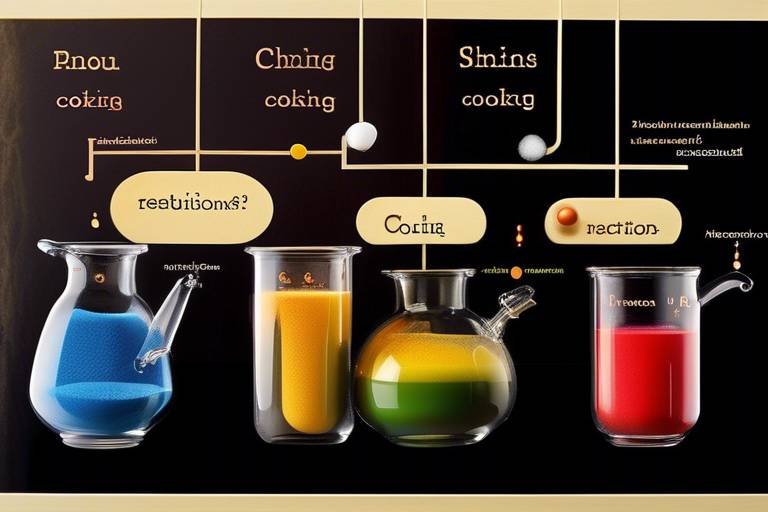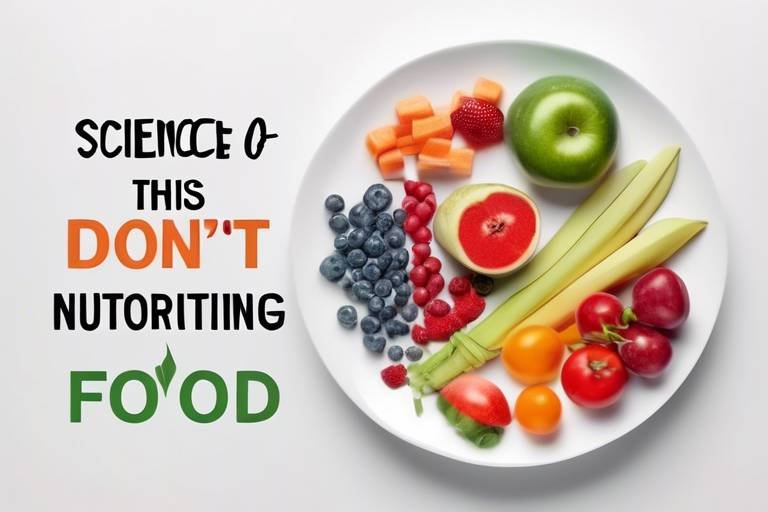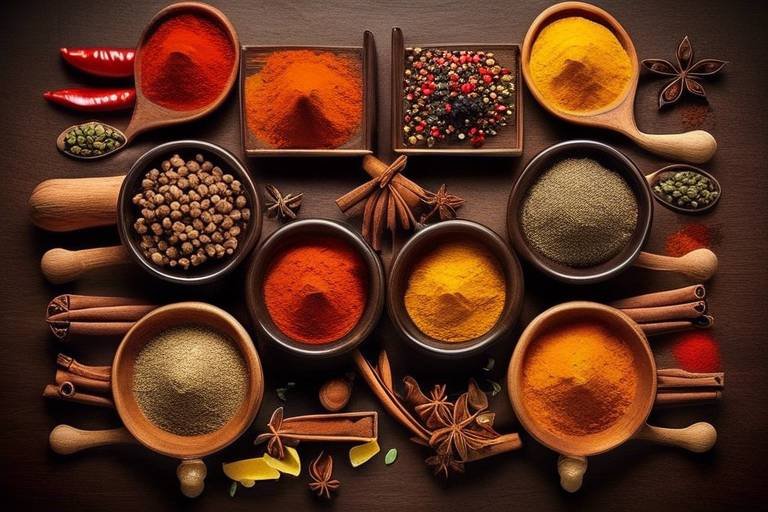The Chemistry of Cooking - Emulsions and Reactions
This article explores the fascinating science behind cooking, focusing on emulsions and chemical reactions that transform ingredients into delicious dishes, enhancing flavor, texture, and nutritional value.
Emulsions are truly a marvel of culinary science! They are mixtures of two immiscible liquids, like oil and water, that typically don't blend well. Imagine trying to mix oil and vinegar; they just don’t want to play nice together! However, with the right technique and ingredients, we can create a beautiful blend that not only looks good but also enhances the flavor and texture of our dishes. The key to this magical transformation lies in the use of emulsifiers, which are substances that help stabilize these mixtures, allowing them to achieve a smooth and creamy consistency.
When it comes to emulsions, we can categorize them into two primary types: temporary and permanent. Temporary emulsions, like vinaigrettes, are quick to make and can separate after a while. They’re perfect for a fresh salad dressing that you whip up just before serving. On the other hand, permanent emulsions, such as mayonnaise, are more stable and can last longer without separating. They require a bit more finesse in preparation but are essential in many recipes, acting as a rich base or a flavorful component in sauces and dips.
So, what exactly do emulsifiers do? They act like the glue that holds our oil and water together. Common emulsifiers include lecithin, found in egg yolks, and mustard, which not only adds flavor but also helps stabilize the mixture. Without these magical ingredients, our sauces would be a sad, oily mess! They work by reducing the surface tension between the liquids, allowing them to mix more easily and remain combined, creating that delightful texture we all love.
When choosing emulsifiers, it’s essential to consider whether to go for natural or synthetic options. Natural emulsifiers, like those found in whole foods, are often healthier and can provide additional nutritional benefits. For instance, using avocado or tahini in dressings not only helps in emulsifying but also adds creaminess and nutrients to your meal. In contrast, synthetic emulsifiers are commonly used in commercial products due to their effectiveness and lower cost, but they may come with health concerns. Opting for natural emulsifiers can be a great step towards healthier cooking practices.
Creating stable emulsions is an art form that requires a bit of technique. Here are some tips to help you achieve that perfect emulsion:
- Start Slow: When combining your liquids, start by adding the oil slowly to the water or vinegar while whisking continuously. This allows the emulsifier to work its magic.
- Temperature Matters: Ensure that your ingredients are at similar temperatures. Cold ingredients can cause the emulsion to break.
- Use Fresh Ingredients: Fresh emulsifiers like egg yolks or mustard will yield better results than older, stale ones.
By following these simple steps, you’ll be on your way to creating smooth and creamy emulsions that elevate your dishes to new heights!
Cooking is not just about following a recipe; it’s a complex dance of chemical reactions that enhance flavor and texture. One of the most fascinating reactions that occurs during cooking is the Maillard reaction. This complex process takes place when proteins and sugars are heated together, leading to the development of rich flavors and appealing colors in our food. It’s the reason why a perfectly seared steak has that beautiful brown crust and mouth-watering taste!
The Maillard reaction is a culinary alchemy that happens at high temperatures, typically above 285°F (140°C). It’s not just a simple browning; it’s a series of reactions that create thousands of different flavor compounds. This is why roasting vegetables or grilling meats can transform ordinary ingredients into something extraordinary. The reaction is influenced by several factors, including the type of food, cooking time, and temperature, making it essential for chefs to understand how to manipulate these elements for optimal flavor development.
Several factors can influence the Maillard reaction, including:
- Temperature: Higher temperatures accelerate the reaction, leading to more intense flavors.
- pH Level: A more alkaline environment can enhance the Maillard reaction, so adding a pinch of baking soda can make a difference.
- Moisture: Too much moisture can hinder the reaction, so drying your ingredients before cooking can help achieve that perfect sear.
By understanding these factors, you can create dishes that are not only delicious but also visually appealing, thanks to the beautiful browning that occurs!
Emulsions have a wide array of applications in various cuisines around the globe. From creamy sauces like béarnaise to refreshing dressings like ranch, emulsions play a vital role in enhancing the taste and presentation of culinary dishes. They can transform a simple salad into a gourmet experience or elevate a dish with just the right amount of creaminess. Desserts, too, benefit from emulsions, as they can add a luscious texture to mousses and custards, making them irresistible!
Q: What is the best way to store emulsions?
A: Emulsions should be stored in an airtight container in the refrigerator. Always give them a good shake or stir before using, as they may separate over time.
Q: Can I use any oil for emulsions?
A: While you can use various oils, it's best to choose oils with a flavor profile that complements your dish. For example, olive oil works well in Mediterranean recipes, while sesame oil adds a distinct flavor to Asian dishes.
Q: How can I fix a broken emulsion?
A: If your emulsion has broken, you can often rescue it by whisking in a small amount of warm water or another emulsifier, like egg yolk or mustard, to help bring it back together.
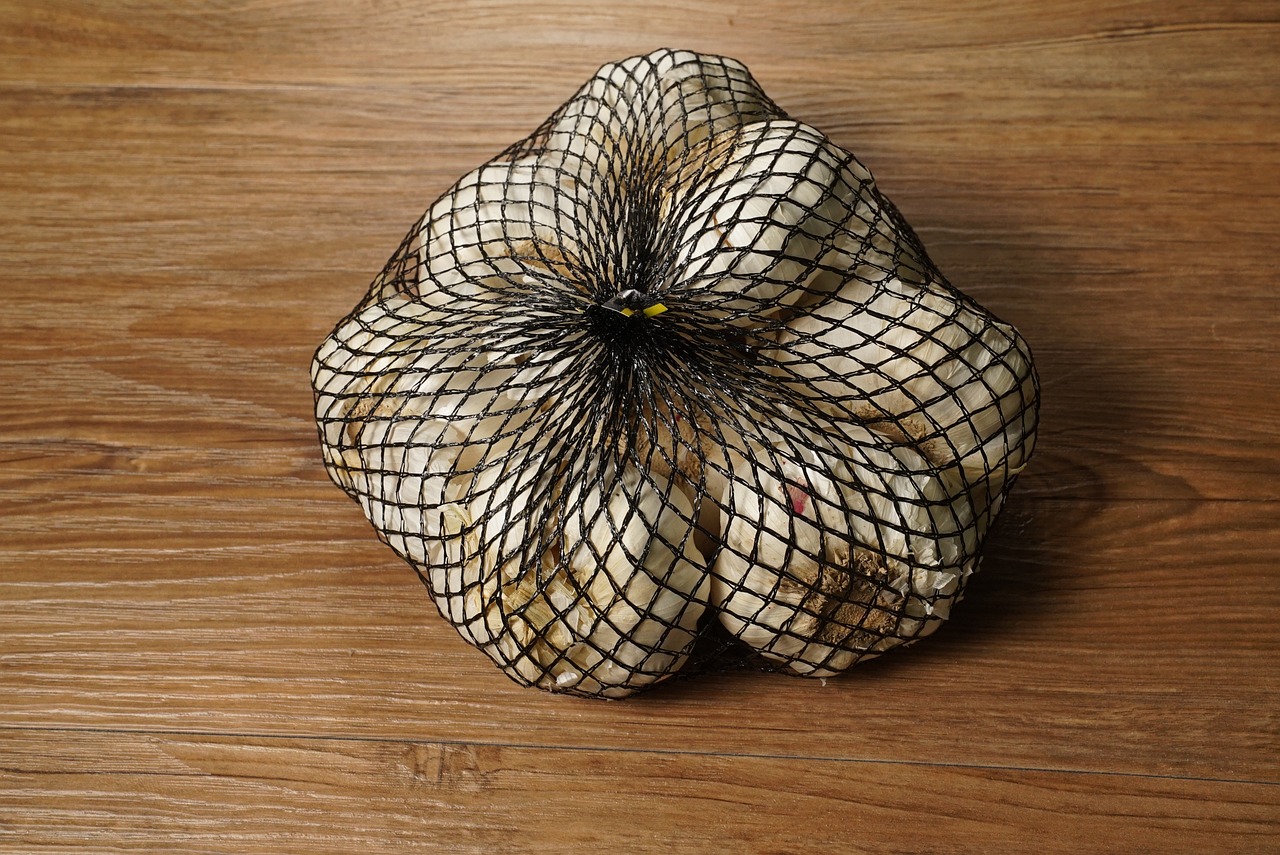
Understanding Emulsions
Emulsions are one of the most intriguing concepts in the culinary world. At their core, emulsions are mixtures of two liquids that typically don't mix well, such as oil and water. Imagine trying to combine vinegar and oil for a salad dressing; they just want to separate, right? This is where the magic of emulsification comes into play. By using an emulsifier, we can create a stable blend that transforms these separate entities into a cohesive mixture.
The formation of an emulsion involves a physical process where one liquid is dispersed in another. The key player here is the emulsifier, a substance that helps to stabilize the mixture. Think of emulsifiers as the peacemakers in a room full of rowdy guests; they help keep everything together and prevent the ingredients from separating. Common emulsifiers include lecithin, found in egg yolks, and mustard, both of which are often used in sauces and dressings to create that smooth, creamy texture we all love.
Now, why are emulsions so significant in cooking? Well, they enhance not just the texture but also the flavor and appearance of dishes. For instance, a well-emulsified vinaigrette can elevate a simple salad, making it not only more palatable but also visually appealing. The stability of an emulsion affects how long the flavors can mingle and develop, which is crucial for dishes that require time to marinate or blend.
There are two primary types of emulsions: temporary and permanent. Temporary emulsions are like a fleeting romance; they can hold together for a short time but will eventually separate. A classic example is a simple vinaigrette made from oil and vinegar. On the other hand, permanent emulsions are more stable and can last much longer. Think of mayonnaise, which can stay emulsified for days without breaking apart. This stability is achieved through the right balance of emulsifiers and techniques used during preparation.
In summary, understanding emulsions is essential for anyone looking to enhance their cooking skills. By grasping the science behind these mixtures, you can elevate your dishes from ordinary to extraordinary. The next time you whip up a dressing or a sauce, remember the role of emulsifiers and the magic they bring to your culinary creations!

Types of Emulsions
When it comes to the world of cooking, understanding the is essential for creating a variety of dishes that are not only delicious but also visually appealing. Emulsions can be broadly categorized into two main types: temporary emulsions and permanent emulsions. Each type has its own unique characteristics, uses, and applications in the culinary arts.
Temporary emulsions are those that are not stable for long periods. They are usually created by simply mixing oil and water, along with an emulsifier, but they tend to separate quickly. A classic example of this type is a vinaigrette, which is a simple mixture of oil, vinegar, and seasonings. When you shake or whisk these ingredients together, they create a temporary emulsion that can coat your salad beautifully. However, if left to sit, the oil and vinegar will eventually separate back into their original forms. The key here is that while they may be easy to prepare, they require immediate use to enjoy their intended texture and flavor.
On the other hand, permanent emulsions are more stable and can hold their form for an extended period. These emulsions are typically created with the help of a strong emulsifier, which binds the oil and water together more effectively. A prime example of a permanent emulsion is mayonnaise. This creamy condiment is made by slowly incorporating oil into egg yolks, which contain lecithin, a powerful natural emulsifier. The result is a thick, stable mixture that can be used in a variety of recipes, from dressings to dips.
Understanding the differences between these two types of emulsions is crucial for any home cook or professional chef. Here’s a quick comparison:
| Type of Emulsion | Stability | Examples |
|---|---|---|
| Temporary Emulsion | Low | Vinaigrettes, Oil and vinegar dressings |
| Permanent Emulsion | High | Mayonnaise, Hollandaise sauce |
Each type of emulsion plays a significant role in enhancing the overall experience of a dish. Temporary emulsions are fantastic for adding a burst of flavor that can be easily adjusted, while permanent emulsions provide a rich and creamy texture that can elevate a meal. Knowing when to use each type can make a significant difference in your cooking.
In conclusion, whether you’re whipping up a quick salad dressing or preparing a classic sauce, understanding the types of emulsions will help you create dishes that not only taste great but also have the right texture. So, the next time you’re in the kitchen, remember that the right emulsion can be the secret ingredient that takes your culinary creations to the next level!
- What is an emulsion? An emulsion is a mixture of two immiscible liquids, such as oil and water, stabilized by an emulsifier.
- Can I make a temporary emulsion last longer? Unfortunately, temporary emulsions are not stable. You can try to whisk them again before serving, but they will separate over time.
- What are some common emulsifiers? Common emulsifiers include egg yolks (lecithin), mustard, and honey.
- How can I tell if my emulsion is stable? A stable emulsion will have a thick, creamy consistency and will not separate when left to sit.
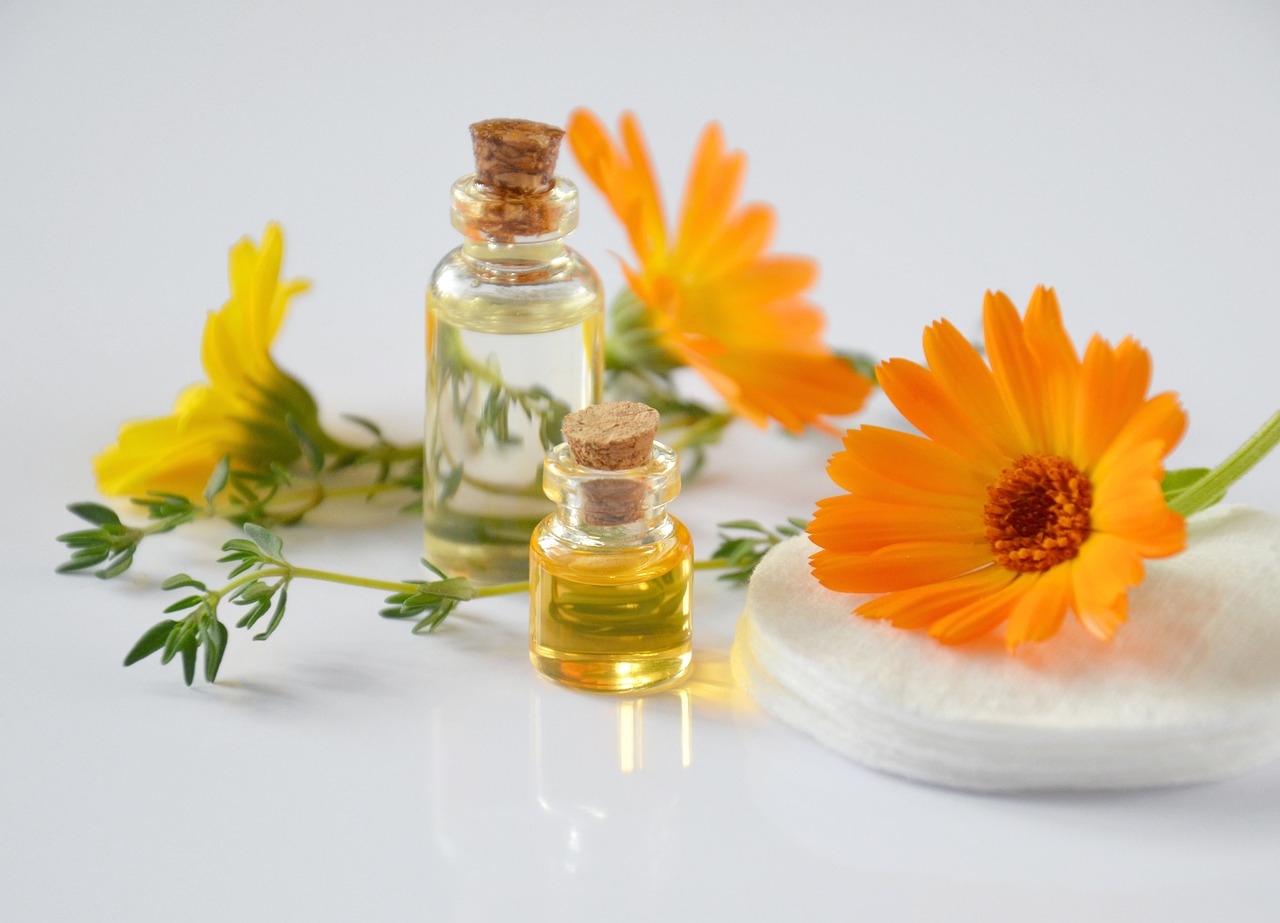
The Role of Emulsifiers
Emulsifiers are the unsung heroes of the culinary world, working tirelessly behind the scenes to create delightful textures and enhance the overall appeal of our favorite dishes. These magical substances help to stabilize emulsions, which are mixtures of two liquids that normally don’t mix well, like oil and water. Imagine trying to mix oil and vinegar for a salad dressing; without an emulsifier, they quickly separate into two distinct layers. But with the right emulsifier, you can achieve a smooth, creamy dressing that clings beautifully to your greens.
So, what exactly are these emulsifiers? They can be natural or synthetic, and they possess unique properties that allow them to reduce the surface tension between immiscible liquids. Some common natural emulsifiers include:
- Lecithin: Found in egg yolks and soybeans, lecithin is widely used in mayonnaise and chocolate to create a stable emulsion.
- Mustard: Often used in vinaigrettes, mustard not only adds flavor but also helps to emulsify oil and vinegar, resulting in a luscious dressing.
- Honey: Besides its sweetness, honey can also act as a natural emulsifier, making it a popular choice in various sauces and marinades.
These emulsifiers work by having one end that is hydrophilic (water-attracting) and another that is hydrophobic (water-repelling). This dual nature allows them to bridge the gap between water and oil, effectively keeping the two phases mixed together. This is why they are crucial in the preparation of sauces, dressings, and even ice creams, where a creamy texture is desired.
When it comes to industrial cooking, synthetic emulsifiers like mono- and diglycerides are commonly used. While they can be effective, many home cooks prefer to stick with natural emulsifiers for their health benefits and the more authentic flavors they impart. Using natural emulsifiers not only enhances the taste but also aligns with a growing trend towards clean eating and more wholesome ingredients.
Understanding the role of emulsifiers in cooking can elevate your culinary creations significantly. By mastering the art of emulsification, you can transform simple ingredients into extraordinary dishes that are not only visually appealing but also packed with flavor. Whether you’re whipping up a classic vinaigrette or experimenting with a new sauce, the right emulsifier can make all the difference in achieving that perfect, velvety texture.
- What is an emulsion? An emulsion is a mixture of two immiscible liquids, such as oil and water, that are stabilized by an emulsifier.
- Can I make emulsions without emulsifiers? While it is possible to create temporary emulsions without emulsifiers, they are often unstable and will separate quickly.
- Are natural emulsifiers better than synthetic ones? Many chefs prefer natural emulsifiers for their health benefits and the authentic flavors they provide, although synthetic emulsifiers can offer more stability in some commercial products.
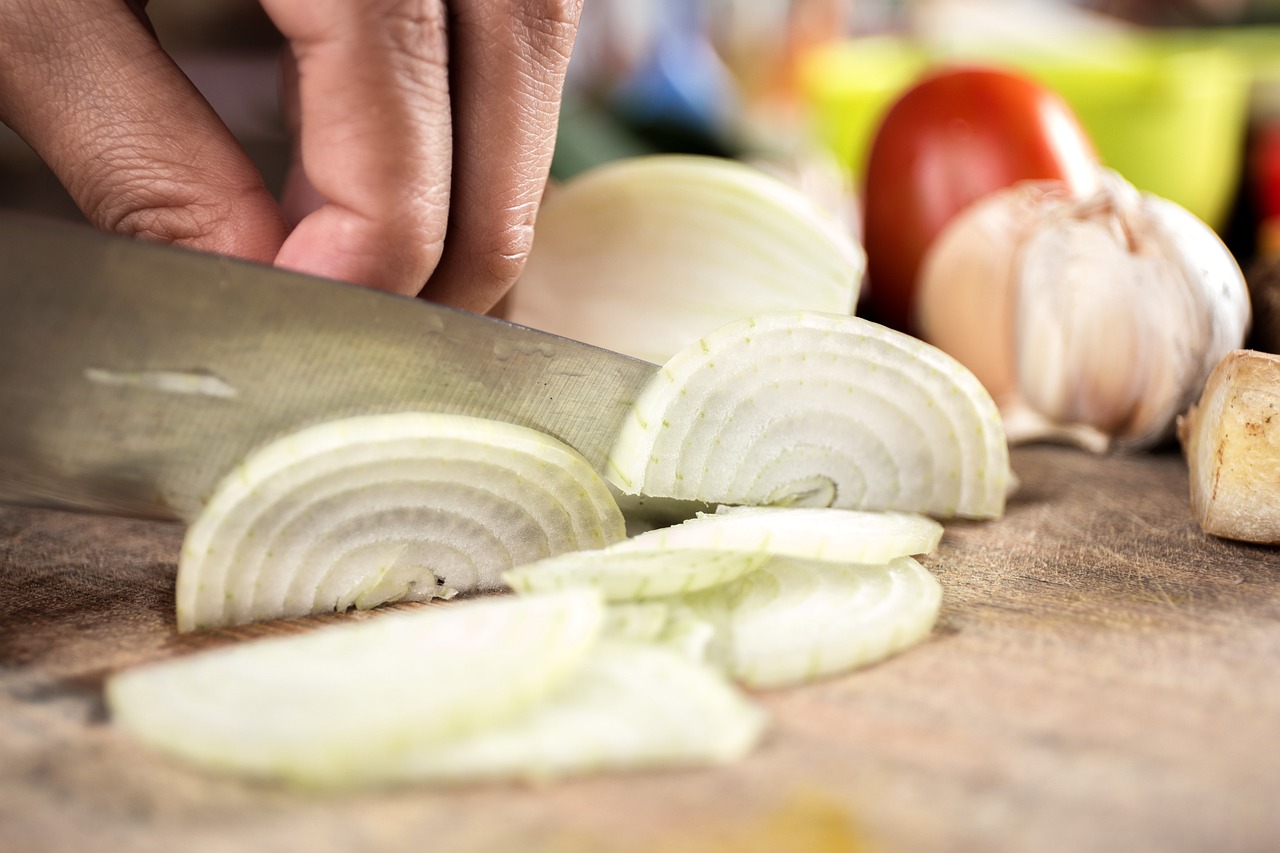
Natural vs. Synthetic Emulsifiers
When it comes to emulsifiers, the culinary world offers a fascinating dichotomy between natural and synthetic options. Understanding the differences between these two types can significantly impact both the flavor and healthiness of your dishes. Natural emulsifiers, which are derived from whole foods, are often favored for their health benefits and ability to enhance the nutritional value of meals. Some common examples include lecithin, found in egg yolks and soy, and mustard, which not only stabilizes emulsions but also adds a delightful tang to sauces and dressings.
On the other hand, synthetic emulsifiers, such as mono- and diglycerides, are commonly used in commercial food production due to their effectiveness and low cost. These emulsifiers can create stable emulsions, but they often lack the depth of flavor that natural options provide. Additionally, many consumers are becoming increasingly wary of synthetic ingredients, opting instead for more wholesome alternatives. Here’s a quick comparison to illustrate the differences:
| Aspect | Natural Emulsifiers | Synthetic Emulsifiers |
|---|---|---|
| Source | Whole foods (e.g., eggs, soy) | Chemically processed |
| Flavor | Enhances taste | Neutral or artificial |
| Health Impact | Generally healthier | Potentially harmful |
| Stability | Varies, may require technique | Highly stable |
Choosing between natural and synthetic emulsifiers often boils down to personal preference and the specific culinary application. If you're whipping up a homemade vinaigrette, natural emulsifiers like mustard or honey can elevate the flavor profile while keeping your dressing healthy. Conversely, if you're looking for a quick and stable solution for a large batch of salad dressing, synthetic emulsifiers might do the trick without the fuss.
Ultimately, the choice you make can influence not only the taste and texture of your dishes but also their nutritional value. As we become more conscious of what we put into our bodies, the trend is leaning towards embracing natural ingredients. So, next time you're in the kitchen, consider reaching for those natural emulsifiers; your taste buds and your health will thank you!
- What are emulsifiers? Emulsifiers are substances that help mix two immiscible liquids, such as oil and water, creating a stable blend.
- Why are natural emulsifiers better? Natural emulsifiers are derived from whole foods and often provide additional health benefits, enhancing the nutritional value of your dishes.
- Can I use synthetic emulsifiers in home cooking? Yes, synthetic emulsifiers can be used in home cooking, but many prefer natural options for their flavor and health benefits.
- How do I know which emulsifier to use? Consider the dish you are preparing; for dressings and sauces, natural emulsifiers usually work best, while synthetic options may be suited for large-scale production.
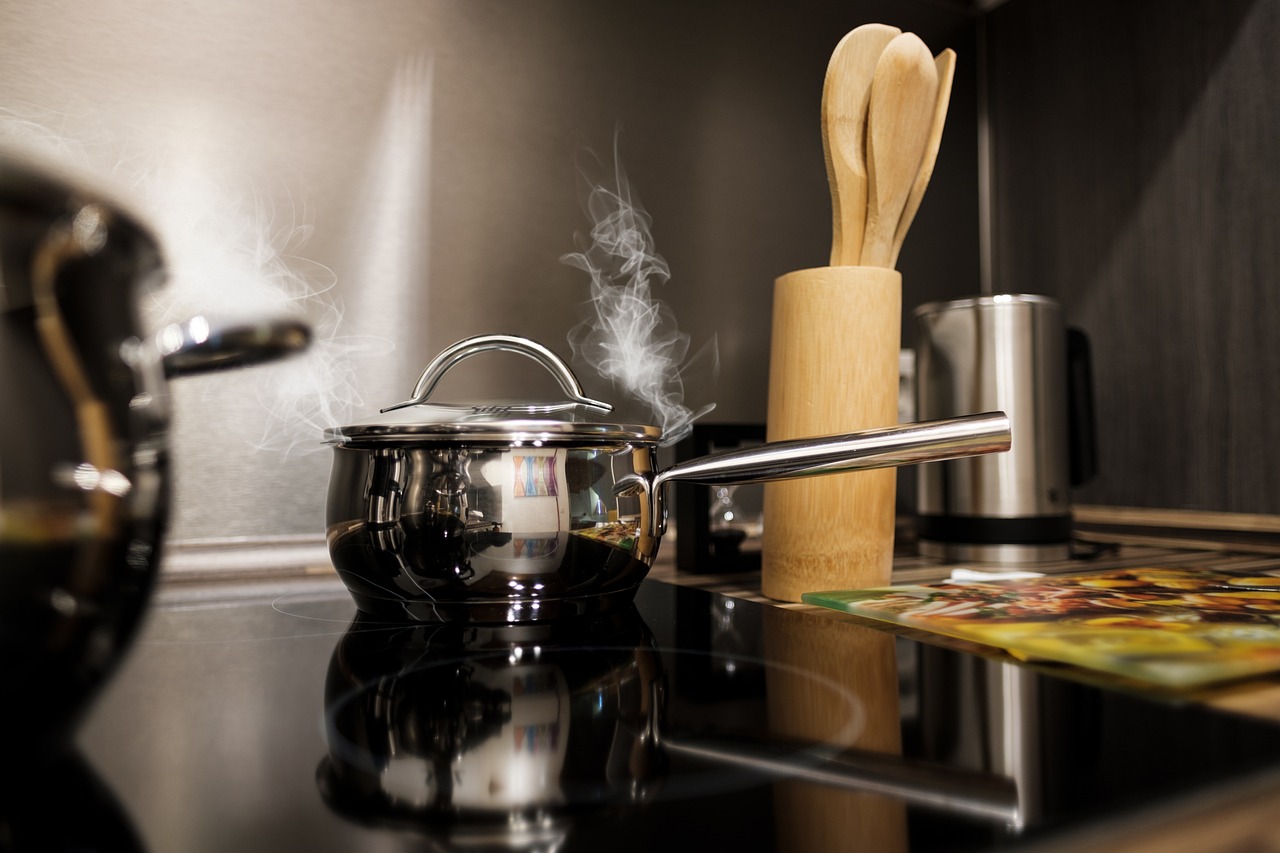
How to Create Stable Emulsions
Creating stable emulsions might sound like a culinary magic trick, but it’s really all about understanding the science behind it. Just like a well-orchestrated dance, emulsions require the right partners and timing to come together harmoniously. The key to a successful emulsion lies in the method and the ingredients used. Here’s how you can master the art of emulsification!
First and foremost, it's essential to choose the right emulsifier. This is your dance partner that helps keep everything in sync. Common emulsifiers include egg yolks, mustard, and honey. Each of these has unique properties that help stabilize the mixture. For example, egg yolks contain lecithin, a powerful emulsifier that can hold oil and water together. When you whisk egg yolks with oil, the lecithin molecules wrap around the oil droplets, preventing them from separating.
Next, consider the temperature of your ingredients. Warm ingredients generally blend better than cold ones, as they are more fluid and easier to mix. Think of it like warming up before a workout; it prepares your body (or in this case, your ingredients) for a smoother performance. If you’re making a vinaigrette, for example, try warming the vinegar slightly before combining it with the oil. This can make a big difference in how well they emulsify.
Another important factor is the rate of mixing. When you combine your ingredients, start slowly. If you pour oil too quickly into your vinegar, you risk overwhelming the mixture, leading to separation. Instead, drizzle the oil in a thin, steady stream while whisking vigorously. This helps to break the oil into smaller droplets, allowing the emulsifier to do its job more effectively.
Additionally, the ratio of oil to water is crucial. A common rule of thumb is to use a 3:1 ratio of oil to vinegar for vinaigrettes. But don't be afraid to experiment! The right balance can depend on personal taste and the specific dish you’re preparing. If you're aiming for a thicker emulsion, increase the amount of emulsifier or reduce the liquid components.
Finally, if you find that your emulsion has started to separate, don’t panic! You can often rescue it by adding a splash of warm water and whisking again. This can help bring the mixture back together, much like a couple reuniting on the dance floor after a misstep.
In summary, creating stable emulsions is all about choosing the right ingredients, understanding the science of mixing, and practicing your technique. With a little patience and practice, you’ll be able to whip up smooth and creamy sauces that will elevate your dishes to a whole new level!
- What is the best emulsifier for homemade mayonnaise?
Egg yolks are the most common emulsifier used for mayonnaise due to their high lecithin content, which helps stabilize the mixture.
- Can I use cold ingredients to make an emulsion?
While it’s possible, using warm ingredients typically yields better results as they mix more easily.
- What should I do if my emulsion breaks?
If your emulsion separates, you can often fix it by adding a small amount of warm water and whisking vigorously.
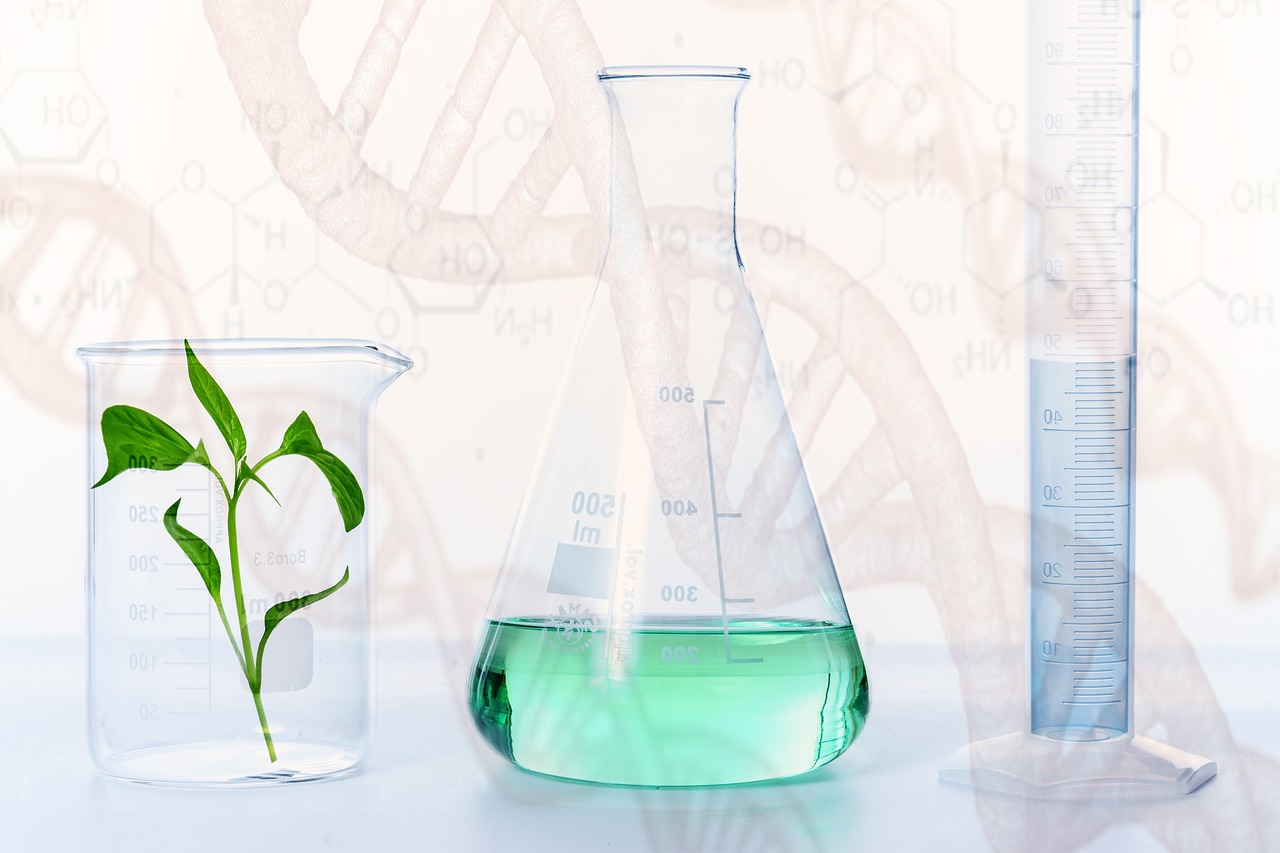
Chemical Reactions in Cooking
Cooking isn't just about following a recipe; it's a captivating dance of chemical reactions that transform raw ingredients into mouthwatering masterpieces. When you heat food, you're not merely warming it up—you're igniting a series of reactions that enhance flavors, textures, and aromas. Imagine the way a simple piece of meat transforms from bland to beautifully browned; that's the magic of chemistry at work! The interactions between heat and ingredients can lead to a plethora of results, making each dish unique and delightful.
One of the most fascinating aspects of cooking is the interplay of heat and time. When proteins and sugars are exposed to high temperatures, they undergo changes that can significantly alter their characteristics. This process can lead to the development of complex flavors and appealing colors, a phenomenon known as the Maillard reaction. This reaction not only enhances taste but also contributes to the visual appeal of food, making it look as good as it tastes.
In addition to the Maillard reaction, there are several other important chemical reactions in cooking, including caramelization, which occurs when sugars are heated to high temperatures. This reaction gives rise to sweet, nutty flavors and a golden-brown color that can elevate desserts and sauces. When you caramelize onions, for example, you're not just cooking them; you're transforming their natural sugars into a rich, complex flavor that adds depth to any dish.
To illustrate the importance of these reactions, let’s take a closer look at some key chemical transformations:
| Reaction | Description | Impact on Food |
|---|---|---|
| Maillard Reaction | Occurs between amino acids and reducing sugars when heated. | Creates rich flavors and brown colors, especially in meats and baked goods. |
| Caramelization | Heating sugars to high temperatures until they melt and brown. | Develops sweet, complex flavors and a golden color in desserts and sauces. |
| Denaturation | Structural change in proteins due to heat, acid, or mechanical action. | Alters texture, making proteins more tender and palatable. |
Understanding these reactions can empower home cooks to experiment with their culinary creations. For instance, adjusting the heat or cooking time can yield different outcomes, allowing you to create a dish that is uniquely yours. Have you ever wondered why searing meat is often recommended? It's not just for the flavor; it’s also about achieving that perfect Maillard reaction!
Moreover, the pH level of your ingredients can also influence these reactions. For example, acidic ingredients like lemon juice or vinegar can enhance the Maillard reaction, resulting in even richer flavors. So, next time you’re cooking, consider how you can manipulate these elements to achieve the desired taste and texture in your dishes.
In conclusion, the chemistry of cooking is not just a scientific principle; it’s a culinary art that can elevate your cooking game. By understanding the various chemical reactions at play, you can unlock new flavors and textures, making your meals not only delicious but also a feast for the eyes. So, why not dive into the science of cooking and experiment with these reactions? You might just surprise yourself with the incredible dishes you can create!
- What is the Maillard reaction? The Maillard reaction is a chemical reaction between amino acids and reducing sugars that occurs when food is heated, resulting in the browning and development of complex flavors.
- How can I enhance the Maillard reaction in my cooking? You can enhance the Maillard reaction by using higher heat, ensuring your food is dry, and incorporating ingredients with natural sugars.
- What is caramelization? Caramelization is the process of heating sugars until they melt and brown, resulting in sweet, nutty flavors and a beautiful golden color.
- Can I control the chemical reactions in cooking? Yes, by adjusting factors such as temperature, pH, and cooking time, you can influence the outcomes of various chemical reactions in your dishes.

Maillard Reaction Explained
The Maillard reaction is one of the most fascinating and essential processes in cooking, responsible for the rich flavors and appetizing colors we associate with our favorite dishes. This complex chemical reaction occurs when proteins and sugars in food are exposed to heat, leading to a series of transformations that create a multitude of flavorful compounds. Imagine the delightful aroma wafting through your kitchen as you sear a steak or toast a piece of bread; that's the Maillard reaction working its magic! It's like a culinary alchemy, turning simple ingredients into something extraordinary.
To understand the Maillard reaction better, let's break down what happens during this process. When you heat food, the heat energy causes amino acids (the building blocks of proteins) to react with reducing sugars. This reaction leads to the formation of a variety of new compounds, including melanoidins, which contribute to the brown color and complex flavors we find in grilled, roasted, or baked foods. The Maillard reaction is not just about browning; it’s about creating depth in flavor profiles. Think of it as the secret ingredient that elevates a dish from bland to bold!
One of the most remarkable aspects of the Maillard reaction is its dependence on several factors. Here’s a quick overview of the key elements that can influence this reaction:
- Temperature: Higher temperatures accelerate the Maillard reaction, resulting in more pronounced flavors and colors.
- pH Level: A more alkaline environment enhances the reaction, while acidic conditions can hinder it.
- Moisture Content: Low moisture levels are preferable, as too much water can lead to steaming rather than browning.
Understanding these factors allows chefs and home cooks alike to manipulate their cooking techniques to achieve that perfect sear or golden crust. For instance, when roasting vegetables, ensuring the oven is hot enough and the vegetables are dry can lead to a beautifully caramelized exterior, thanks to the Maillard reaction.
In essence, the Maillard reaction is a celebration of flavor development in cooking. It’s a reminder that cooking is not just about following recipes but also about understanding the science behind the art. So, the next time you enjoy a beautifully browned piece of meat or a perfectly toasted slice of bread, take a moment to appreciate the complex chemistry that made it possible!
- What is the Maillard reaction?
The Maillard reaction is a chemical process that occurs when proteins and sugars are heated together, resulting in browning and complex flavors in cooked foods.
- How can I enhance the Maillard reaction in my cooking?
To enhance the Maillard reaction, cook at higher temperatures, maintain low moisture, and consider adjusting the pH by adding alkaline ingredients.
- Is the Maillard reaction the same as caramelization?
No, while both processes result in browning, caramelization specifically involves the heating of sugars, whereas the Maillard reaction involves both proteins and sugars.
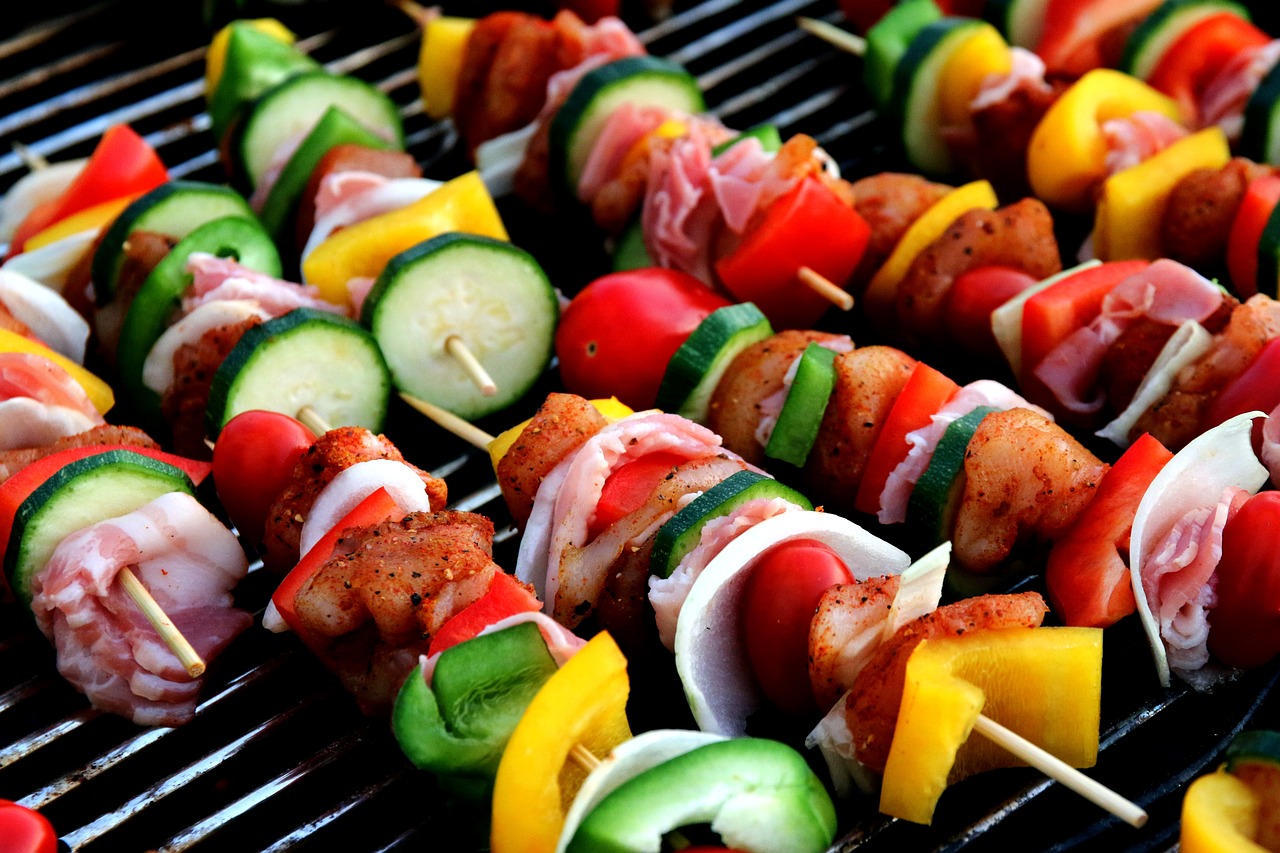
Factors Influencing the Maillard Reaction
The Maillard reaction is one of the most captivating aspects of cooking, responsible for the delicious flavors and appealing colors we often associate with well-cooked food. But did you know that several factors can influence this remarkable reaction? Understanding these factors can help you master the art of cooking, allowing you to create dishes that are not only tasty but visually enticing as well.
First and foremost, temperature plays a crucial role in the Maillard reaction. This reaction typically occurs at high temperatures, usually above 140°C (284°F). The higher the temperature, the faster the reaction occurs, leading to that beautiful browning we love. However, if the temperature is too high, it can lead to burnt flavors, which is definitely not what we want. So, finding the right balance is key!
Another important factor is pH level. The Maillard reaction thrives in an alkaline environment. When cooking, if you can slightly increase the pH by adding a pinch of baking soda or using ingredients like soy sauce, you can enhance the reaction. This results in richer flavors and deeper colors. Conversely, acidic conditions can slow down the process, so be mindful of the ingredients you use!
Moisture content is also significant. While some moisture is necessary for the reaction to occur, too much can hinder it. When food is too wet, it steams rather than browning, which is why techniques like searing or roasting are often recommended. To achieve that perfect Maillard effect, aim for a dry surface on your ingredients before cooking. This way, you can promote browning and enhance flavor.
Lastly, the type of food you are cooking matters. Different foods contain varying amounts of sugars and amino acids, which are essential for the Maillard reaction. For example, meats and bread are rich in proteins and sugars, making them excellent candidates for this reaction. On the other hand, vegetables may not brown as effectively due to their lower protein content. Understanding these differences can help you choose the right ingredients for optimal flavor development.
In summary, mastering the Maillard reaction involves paying attention to temperature, pH, moisture, and the type of food. By manipulating these factors, you can unlock a world of flavor and color in your cooking, making every dish a delightful experience!
- What is the Maillard reaction? - It is a chemical reaction between proteins and sugars that gives browned foods their distinctive flavor and color.
- How can I enhance the Maillard reaction in my cooking? - You can enhance it by cooking at higher temperatures, adjusting the pH, controlling moisture, and choosing the right foods.
- Is the Maillard reaction the same as caramelization? - No, while both involve browning, caramelization specifically refers to the browning of sugars, whereas the Maillard reaction involves amino acids and reducing sugars.

Applications of Emulsions in Cuisine
Emulsions play a vital role in the culinary world, acting as the backbone for many beloved dishes and sauces. Think about your favorite salad dressing or the creamy texture of a hollandaise sauce; these are prime examples where emulsions shine. Their ability to blend ingredients that typically resist mixing, like oil and water, not only enhances flavor but also improves the overall mouthfeel of a dish. The magic of emulsions can be found in various culinary applications, bringing together flavors and textures in a way that is both artistic and scientific.
One of the most common uses of emulsions is in sauces. For instance, a classic vinaigrette is a simple emulsion of oil and vinegar, often enhanced with mustard or honey to stabilize it. This delightful mixture can elevate a simple salad into a gourmet experience. When properly emulsified, the vinaigrette coats each leaf of lettuce evenly, ensuring that every bite is bursting with flavor. Similarly, mayonnaise, a permanent emulsion, is a staple in many kitchens. It serves not only as a condiment but also as a base for other sauces, showcasing the versatility of emulsions in cooking.
Beyond sauces, emulsions are also essential in desserts. Take ice cream, for example; the smooth and creamy texture is achieved through a delicate emulsion of cream, sugar, and air. The emulsifiers in the mix help to trap air, creating that light and fluffy consistency we all love. Additionally, emulsions are used in ganaches and mousses, where they help to blend flavors and create luxurious textures that melt in your mouth. The interplay of fat and water in these desserts is what gives them their rich, satisfying mouthfeel.
Moreover, emulsions are crucial in achieving the desired consistency in soups and gravies. By incorporating emulsified ingredients, chefs can create a velvety texture that enhances the dish's overall appeal. For instance, a bisque often includes an emulsion of cream and broth, which not only thickens the soup but also enriches its flavor profile. This technique is essential for achieving that restaurant-quality finish at home.
In addition to these applications, emulsions also play a role in enhancing the nutritional value of dishes. By incorporating emulsifiers, such as lecithin, into meals, chefs can improve the absorption of fat-soluble vitamins, like A, D, E, and K. This means that a well-emulsified dressing not only tastes great but also helps your body absorb essential nutrients more effectively.
In summary, emulsions are not just a technicality in cooking; they are a culinary art form that enhances flavor, texture, and nutrition. From sauces to desserts, their applications are vast and varied, making them an essential component of any cook's toolkit. Understanding how to create and utilize emulsions can elevate your cooking game, allowing you to craft dishes that are not only delicious but also visually appealing.
- What is an emulsion? An emulsion is a mixture of two immiscible liquids, such as oil and water, stabilized by an emulsifier.
- What are some examples of emulsions? Common examples include mayonnaise, vinaigrettes, and hollandaise sauce.
- How can I create a stable emulsion? To create a stable emulsion, use an emulsifier, add ingredients slowly, and whisk vigorously.
- What are natural emulsifiers? Natural emulsifiers include ingredients like egg yolk, mustard, and lecithin found in soybeans.
- Why are emulsions important in cooking? Emulsions enhance flavor, improve texture, and can increase the nutritional value of dishes.
Frequently Asked Questions
- What is an emulsion?
An emulsion is a mixture of two immiscible liquids, like oil and water. It requires an emulsifier to stabilize the mixture, allowing the two liquids to blend together smoothly.
- How do emulsifiers work?
Emulsifiers have molecules with a hydrophilic (water-attracting) head and a hydrophobic (water-repelling) tail. This unique structure allows them to interact with both oil and water, stabilizing the emulsion and preventing separation.
- What are the main types of emulsions?
There are two primary types of emulsions: temporary and permanent. Temporary emulsions, like vinaigrettes, can separate quickly, while permanent emulsions, such as mayonnaise, remain stable for longer due to the emulsifiers used.
- Can you give examples of natural emulsifiers?
Sure! Common natural emulsifiers include lecithin, found in egg yolks, and mustard. These ingredients help create stable emulsions in sauces and dressings without the need for synthetic additives.
- What is the Maillard reaction?
The Maillard reaction is a complex chemical reaction that occurs when proteins and sugars are heated together, resulting in the development of rich flavors and appealing colors in cooked foods, such as browned meats and baked goods.
- What factors influence the Maillard reaction?
Several factors can affect the Maillard reaction, including temperature, pH, and moisture levels. By manipulating these conditions, you can enhance flavor development in your cooking.
- How can I create stable emulsions at home?
To create stable emulsions, start with room temperature ingredients, add the oil slowly while whisking vigorously, and consider using an emulsifier. Practice makes perfect, so don't hesitate to experiment with different techniques!
- What are some culinary applications of emulsions?
Emulsions play a vital role in various culinary applications, including sauces, dressings, and desserts. They enhance the taste, texture, and presentation of dishes, making them a key component in many recipes.

